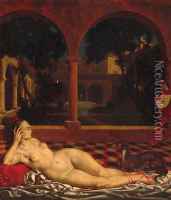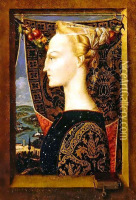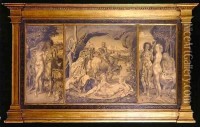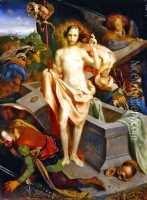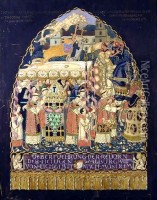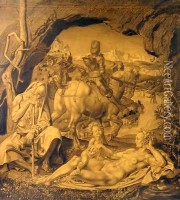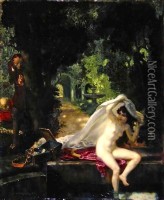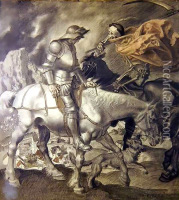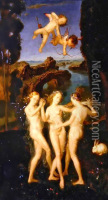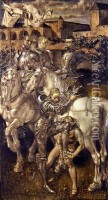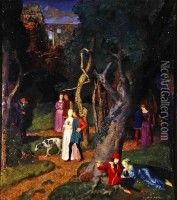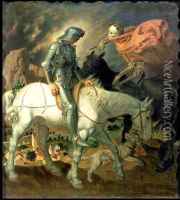Theodor Baierl Paintings
Theodor Baierl was a German painter known for his classical style and mythological subjects. Born in 1881 in Teisbach, Bavaria, he was raised in a period of great artistic change when modernism was beginning to take hold. Despite the changing art scene, Baierl remained committed to the academic traditions and techniques he had learned.
He studied at the Munich Academy of Fine Arts, which was a leading institution in Germany for the teaching of painting. Here, he was influenced by the academic and classical approaches to art that characterized the late 19th century. Baierl excelled in his studies and was recognized for his skill in drawing and painting the human figure, a talent that would become a hallmark of his artistic career.
After completing his studies, Baierl began to exhibit his work. His paintings often drew upon themes from Greek and Roman mythology, as well as biblical stories, which were popular subjects in the academic circles of the time. He was known for his meticulous attention to detail and his ability to convey the textures of fabrics and the subtleties of the human form.
Baierl’s work received various honors, and he was able to establish himself as a respected artist in Munich's art circles. However, his dedication to classical subjects and techniques meant that he was somewhat at odds with the avant-garde movements that were gaining momentum in the early 20th century.
Despite his traditionalist stance, Baierl's work was characterized by a certain softness and warmth, setting him apart from the colder neoclassicism of some of his contemporaries. His paintings often featured a harmonious interplay of light and shadow, and he had a particular talent for capturing the emotional resonance of his mythological subjects.
Theodor Baierl passed away in 1932, leaving behind a body of work that, while perhaps not as well-known as some of his contemporaries, demonstrates a masterful command of traditional painting techniques and a deep appreciation for classical beauty. His art remains a testament to the enduring appeal of mythological subjects and the skill of academic painting long after the rise of modernism.
